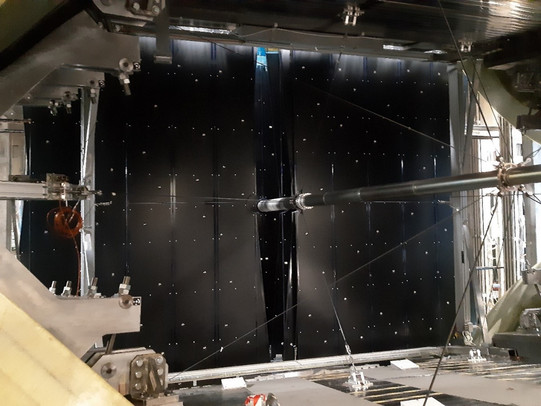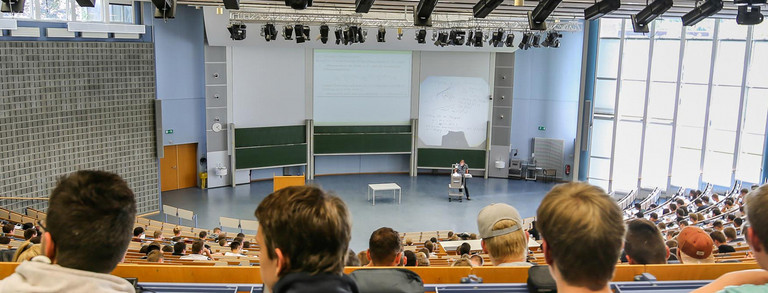LHCb Detector development
Track detectors for the LHCb upgrade
In 2022, the upgrade of the LHCb experiment will be completed, in which much higher data rates can be processed than with the previous LHCb detector. Track detector modules made of scintillating fibres (SciFi) with silicon photomultiplier readout (SiPM) form the main track chambers of the Upgrade detector. Such a use of SciFi technology is completely new territory in high-energy physics.
The hardware group of the working group led the development of a high-precision, automated production process for mats of scintillating fibres with the necessary quality analysis. Furthermore, the properties of scintillating fibres and SiPMs - especially under the influence of radiation - were investigated to test their suitability for operation in experiments. After a successful development phase, around one third of the mats made of scintillating fibres for the >300 qm SciFi detector of the LHCb upgrade were manufactured at the Dortmund site until 2018. From 2019 to 2022, the Hardware Group was instrumental in the installation of the SciFi on site at CERN and was responsible in particular for the cabling, the power supply and the detector security system (DSS) during this time. Currently, the hardware group is involved in the commissioning of the SciFi detector, particularly in the area of data readout over fibre optic lines. There is a strong collaboration with the members of the working group responsible for alignment, simulation and reconstruction at the SciFi detector.

Another mainstay of the hardware group is electronics development. It must be possible to read out the detector at a rate of 40 MHz. Therefore, the so-called Tell40 board was developed, which is an important component in the processing chain of the measurement data. The hardware group was a driving force especially in the development phase, the final version of the TELL40 was developed in Marseille and produced with industrial partners.
For the precise measurement of the luminosity at LHCb, the development of a new detector based on pixel modules, the LumiTracker, has begun in a collaboration with scientists at CERN and NIKHEF. The principle is to use charged particle tracks reconstructed in real time, whose rate depends very linearly on the luminosity. The pixel modules are based on the vertex detector upgrade from LHCb and the TimePix4 readout chip, respectively, which is a further development of the VeloPix chip used there. The complex detector system is to be commissioned in time for Run 4 (2029) of the LHC. We expect to be able to gain important insights for future 4D pixel detector systems from the development, construction and commissioning as they are to be used in Run 5 of the LHC.
In the LHCb experiment, the Beam Condition Monitor (BCM) ensures the early detection of LHC beam conditions that pose a danger to the LHCb detectors. The BCM system implemented by the hardware group in the LHCb experiment is based on the current readout of two times eight diamond sensors. If the measured current values exceed a critical limit, a signal is sent and the LHC beam is safely terminated (dump) within a very short time. This BCM system was implemented and operated very successfully by the hardware group in Run 1 and Run 2 of the LHC from 2008 to 2018. With the LHCb upgrade, the BCM system will also be largely renewed. The diamond sensors were replaced by brand-new, extensively tested new diamond sensors. The biggest innovation, however, concerns a new FPGA-based readout system (MIBAD), which is being realised as part of a doctoral thesis.
The expertise in the field of diamond detectors has resulted in development work to realise reliable, fast beam monitoring systems for medical and research accelerators.
For future improvements (Upgrade II) of the LHCb detector, the hardware group will advance the development and installation of pixel detectors for an inner track chamber system. The central building block is monolithic active pixel sensors, which will be further developed in collaboration with Karlsruhe, Heidelberg, Liverpool and Bonn with the aim of installing a first Mighty Tracker system in the LHCb experiment in Long Shut Down 3.

